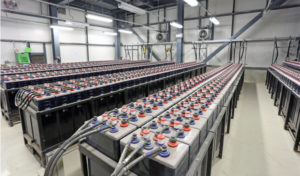Stellantis, the world’s sixth-largest automaker, was formed by the merger of PSA and Fiat Chrysler and is now joining the battle for battery supremacy in Europe. The FT reports:
Stellantis will spend more than €30bn over the next four years developing electric cars and software, underlining the investment the auto industry is having to make as combustion engines are phased out.
In the first major announcement on its electric strategy since it was formed by the merger of France’s PSA and Fiat Chrysler earlier this year, Stellantis laid out plans to open five battery factories across Europe and the US by the end of the decade.
The world’s sixth-largest automaker also said it would introduce a range of cars that can drive up to 500 miles on a single charge. With brands including Jeep, Peugeot, Vauxhall and Ram, Stellantis wants 70 per cent of European sales and 40 per cent of US sales to be of low-emission vehicles by 2030.
The electric plans from Stellantis have been keenly anticipated because the €50bn merger brought together two companies at opposites end of the industry’s electric spectrum.
PSA has already invested in electric vehicles, helping the group meet the EU’s CO2 targets last year. FCA, however, only met the rules after paying Tesla hundreds of millions of euros for carbon credits. The Italian-American group is considered the industry’s laggard on electric technology.
The ambitious plan by Stellantis to invest €30bn by 2025 echoes that of rivals. Volkswagen, the group’s largest competitor in Europe, is spending €35bn on electric vehicles, while Ford, which competes with Opel in Europe and Ram and Jeep in the US, earlier this year raised its spending targets to “more than $30bn” by the end of the decade.
Among the initiatives and targets set out on Thursday, Stellantis said Opel and Vauxhall will only sell electric cars in Europe after 2028, two years earlier than arch-rival Ford. Jeep, historically a major profit generator for Fiat Chrysler, promised to release a battery model in every segment by 2025.
Read more here.

